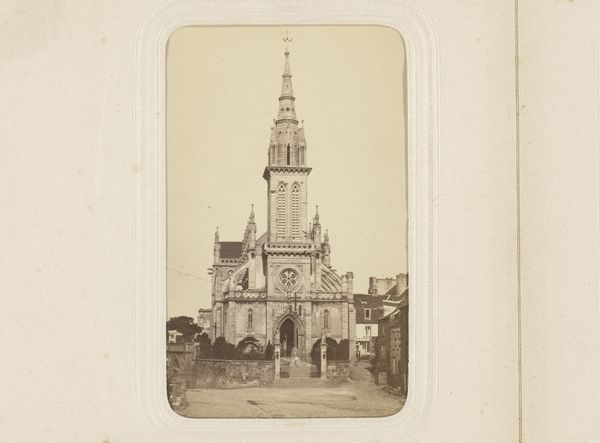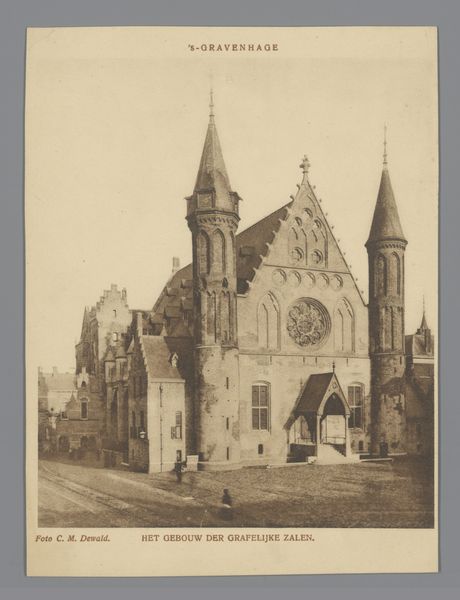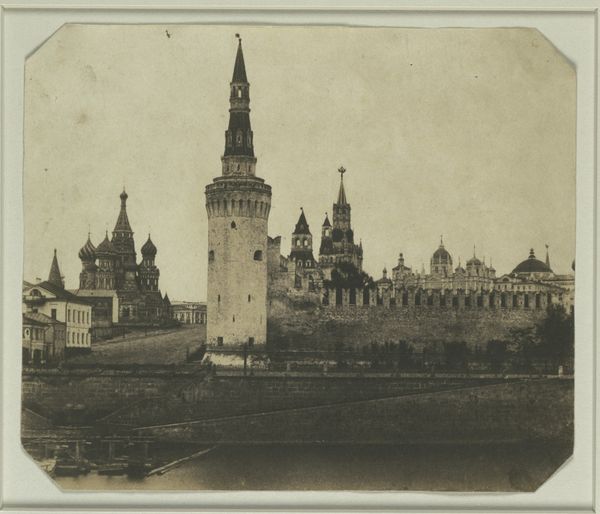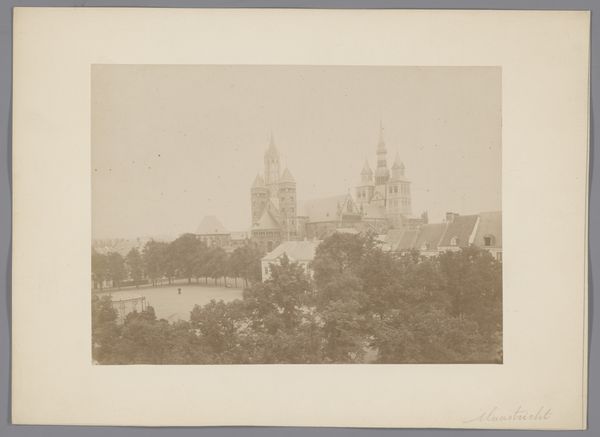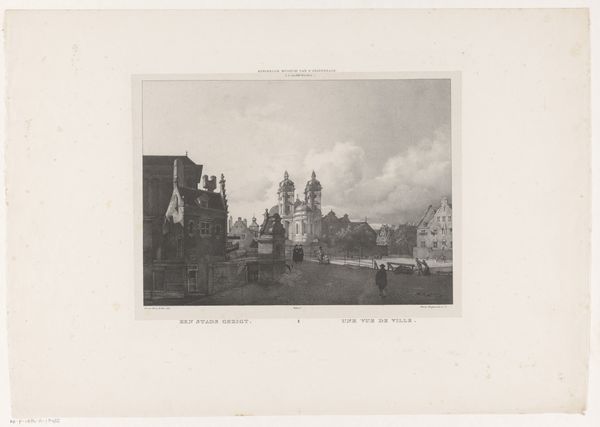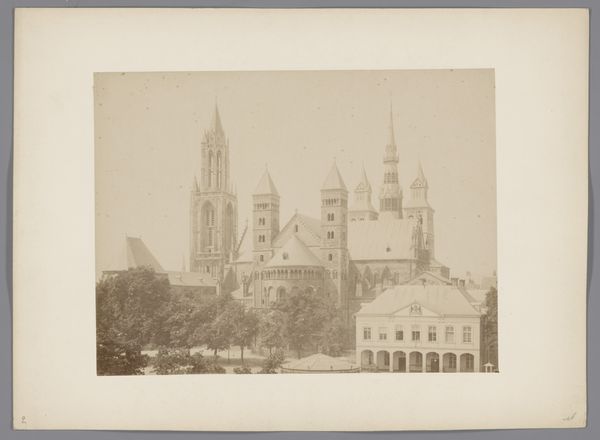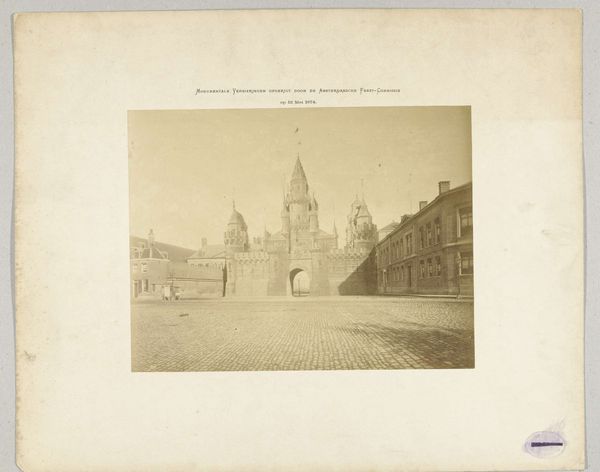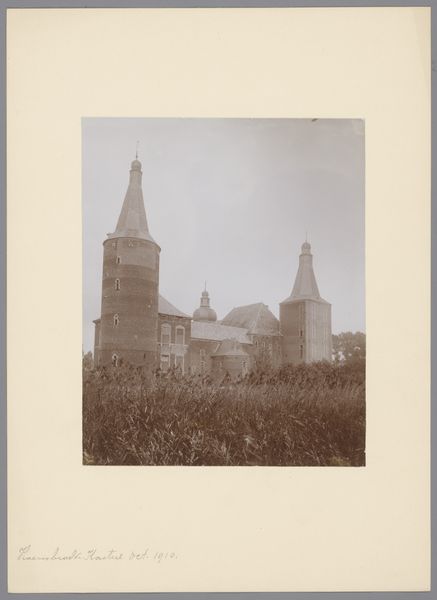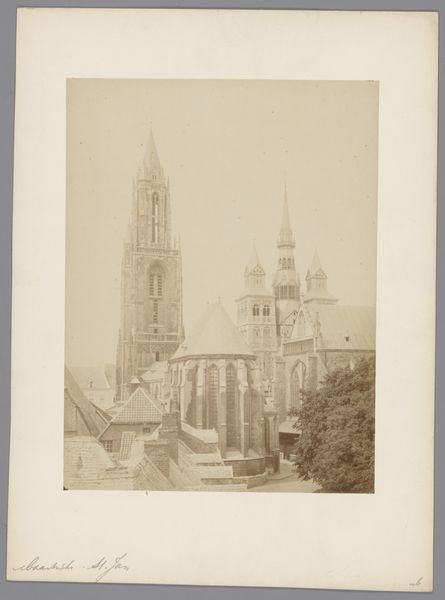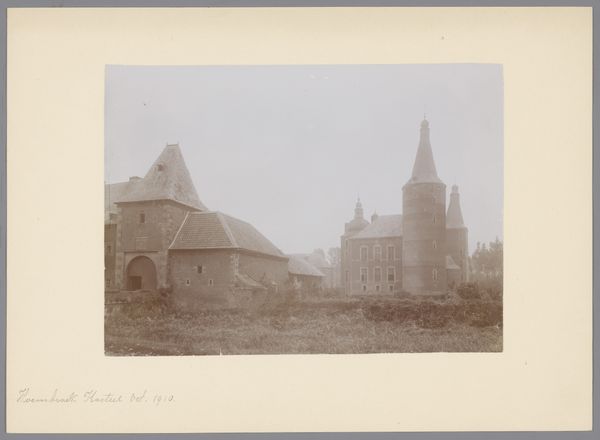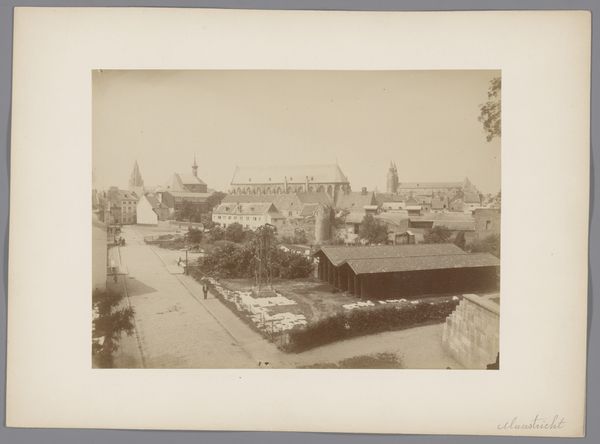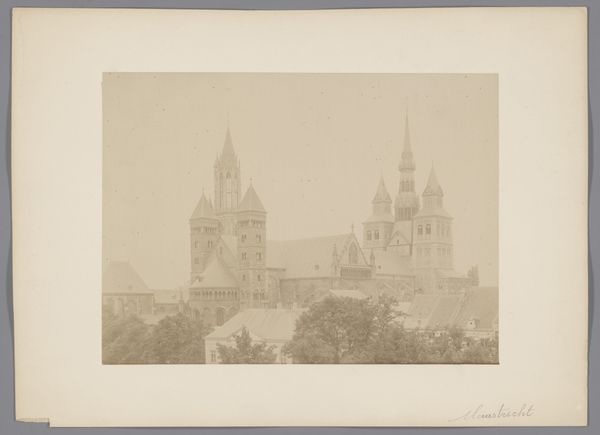
print, photography
# print
#
landscape
#
photography
#
ancient-mediterranean
#
orientalism
#
russian-avant-garde
#
cityscape
#
realism
Dimensions: height 82 mm, width 120 mm, height 259 mm, width 365 mm
Copyright: Rijks Museum: Open Domain
Curator: Immediately striking about this photographic print is its subdued tonal range, almost entirely monochrome save for subtle variations. Editor: Yes, it has a distinctly solemn atmosphere. It makes me think of old postcards, documents of a world that's somehow both familiar and irrevocably distant. Curator: Indeed. What we’re looking at is "Spasskaya Tower with Access to the Kremlin," a work by Henry Pauw van Wieldrecht created around 1898. It's a superb example of late 19th-century photography, capturing the iconic Moscow landmark. Editor: The Kremlin is potent—more than just a building, but an enduring symbol of Russian power and, historically, of the Tsarist regime. The Spasskaya Tower, with its clock, immediately signals time and history. Is this figure walking toward the entrance symbolic too? Is he entering history itself? Curator: It's fascinating how the converging lines of the cobblestone pavement create a powerful sense of perspective, drawing the eye upward towards the imposing structure of the Tower. I'm interested in the photographer's perspective too. Notice how van Wieldrecht has positioned the camera so that the Tower dominates the frame, emphasizing its verticality against the vast expanse of the plaza. Editor: Absolutely, the perspective makes it imposing, almost intimidating. Beyond just the architecture, you sense the weight of centuries of political intrigue. It's impossible to see the Kremlin, and especially that star, without thinking about the complicated and fraught relationship between Russia and the rest of the world. Curator: That brings us to a crucial understanding. While capturing the real world through a lens, photography can always reveal carefully structured form that highlights an inherent meaning, regardless of what interpretation you place on that form. Editor: You’re right. I tend to overemphasize symbolic meaning; I’m trying to decode the visual culture and emotional baggage carried within the photograph. It’s a powerful reminder to analyze how both visual components and subject matter together give historical images their potency.
Comments
No comments
Be the first to comment and join the conversation on the ultimate creative platform.
